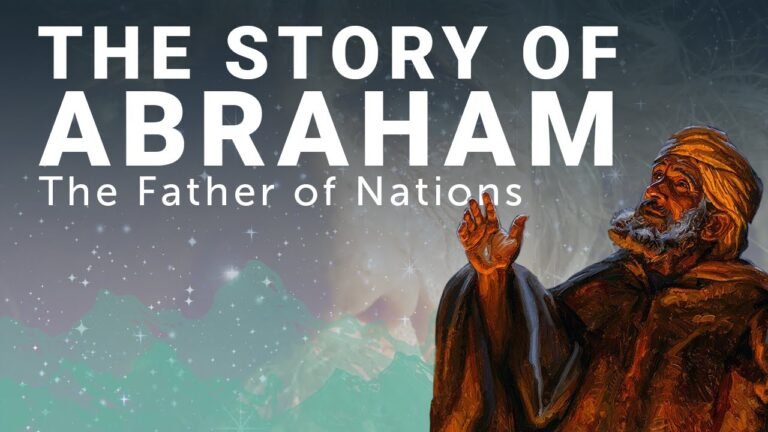The Significance of Viacrucis in Spiritual Reflection
Viacrucis, a powerful tradition steeped in history, invites participants to embark on a profound journey of reflection and devotion. This ritual, often observed during Holy Week, commemorates the Passion of Christ through a series of poignant stations that depict his final moments. Each station serves as a reminder of sacrifice, resilience, and hope, drawing communities together in a shared experience of faith. As we explore the significance and impact of viacrucis, we uncover not only its spiritual essence but also its role in fostering unity and cultural identity.
What is the significance of viacrucis in tradition?
Viacrucis, or Stations of the Cross, commemorates Jesus’ passion, fostering reflection, devotion, and community participation in Christian traditions during Lent, especially on Good Friday.
What does Via Crucis mean?
Via Crucis, a Latin term meaning “Way of the Cross,” signifies a powerful journey through suffering and sacrifice. Traditionally observed during Lent, it encapsulates the path that Jesus Christ took on the day of His crucifixion. This poignant phrase evokes deep reflection on the trials faced not only by Christ but also by individuals navigating their own struggles in life.
The Via Crucis serves as a reminder of resilience and hope in the face of adversity. Each station along the way invites participants to contemplate the profound lessons of compassion, redemption, and perseverance. By engaging with this spiritual practice, one can find solace and strength, transforming personal suffering into a shared experience of faith and renewal.
Are the Stations of the Cross exclusively a Catholic practice?
The Stations of the Cross, a cherished Christian tradition, transcends denominational boundaries, although it is most prominently associated with Roman Catholicism. This devotional practice involves a series of artistic representations that commemorate the events of Good Friday, specifically the journey of Jesus from His condemnation to His burial. While it is deeply rooted in Catholic worship, its significance is also recognized in other Christian communities.
Anglican and Lutheran traditions, for example, embrace the Stations of the Cross as a meaningful way to reflect on Christ’s suffering and sacrifice. These denominations often adapt the prayers and meditations associated with each station, allowing for a personalized experience that fosters spiritual growth. The common prayer, “We adore you, O Christ, and we bless you,” serves as a unifying expression of reverence across different faiths.
Ultimately, the devotion can be practiced individually or in groups, making it accessible for believers seeking to deepen their faith. Regardless of the specific tradition, the Stations of the Cross invite participants to engage thoughtfully with the narrative of Christ’s passion, enriching their understanding of His sacrifice and love.
Are the Stations of the Cross found in the Bible?
The Stations of the Cross, a cherished devotion in the Catholic Church, have evolved over time to reflect a deeper scriptural foundation. In 1991, Pope John Paul II introduced a revised series of fourteen stations, each rooted exclusively in the biblical narrative. This shift emphasizes the importance of Scripture in guiding the faithful through the Passion of Christ, allowing for a more direct connection to the Gospel accounts.
While the traditional Stations of the Cross incorporated various episodes from early Christian tradition, not all of these events are documented in the biblical texts. By focusing solely on scriptural references, the new series aims to enhance the spiritual experience of the faithful, inviting them to meditate on the Passion through the lens of the Bible. This transformation underscores the Church’s commitment to aligning its practices with the core tenets of Christianity.
Journey Through Faith: Understanding Viacrucis
The Viacrucis, or Stations of the Cross, is a profound spiritual journey that encapsulates the essence of faith and sacrifice. Each station represents a moment in the final hours of Jesus Christ, inviting believers to reflect on His suffering and love. This sacred path offers an opportunity for introspection, allowing individuals to connect deeply with their own struggles and the redemptive power of faith. As participants move from one station to the next, they are not merely retracing historical steps but engaging in a transformative experience that enriches their spiritual lives.
Embracing the Viacrucis encourages a communal spirit, as many gather together to share in this time-honored tradition. Through prayers, hymns, and silent contemplation, participants create a supportive atmosphere that fosters unity and compassion. The shared journey enhances the understanding of collective suffering and the hope that emerges from it. Such gatherings remind believers that they are not alone in their trials; rather, they walk alongside a community bound by faith and love.
Ultimately, the Viacrucis serves as a powerful reminder of resilience and redemption. Each station brings forth lessons of forgiveness, sacrifice, and the promise of new beginnings. As individuals reflect on Christ’s journey, they are inspired to carry these teachings into their daily lives, embodying the spirit of love and service. This pilgrimage through faith not only deepens one’s personal relationship with God but also ignites a commitment to live out the principles of compassion and grace in the world around them.
A Path to Redemption: The Role of Viacrucis
In the heart of every community lies the potential for transformation, often ignited by shared experiences and collective journeys. Viacrucis, a time-honored tradition, serves as a poignant reminder of the struggles and sacrifices that shape our lives. This ritual not only reflects the trials of an individual but also resonates with the universal quest for redemption, inviting participants to confront their own challenges while fostering a sense of solidarity among them.
As participants walk the path of Viacrucis, they engage in a profound reflection on the themes of suffering and hope. Each station along the way symbolizes a moment of struggle, encouraging individuals to pause and contemplate their own burdens and the burdens of others. This act of remembrance and introspection becomes a catalyst for healing, as the shared experience nurtures empathy and understanding, ultimately paving the way for personal and communal growth.
The journey of Viacrucis culminates in a powerful message of renewal and forgiveness. As the participants emerge from this transformative experience, they carry with them a renewed sense of purpose and a commitment to uplift not only themselves but also those around them. In this way, Viacrucis transcends its religious origins, evolving into a universal pathway for redemption that inspires individuals to embrace their past, learn from their experiences, and step boldly into a brighter future.
Reflecting on Sacrifice: The Essence of Viacrucis
As the journey of Viacrucis unfolds, it invites us to reflect on the profound nature of sacrifice. Each station presents a poignant moment, encapsulating the struggles and triumphs that define the human experience. Through the trials faced by Jesus, we are reminded of the deep resilience and unwavering love that can emerge from suffering. This sacred path not only commemorates His journey but also serves as a mirror for our own lives, prompting us to confront our challenges and embrace the transformative power of sacrifice.
In this contemplation of Viacrucis, we find a call to action that resonates beyond the confines of tradition. It urges us to recognize the sacrifices made by countless individuals in our communities, often unnoticed yet deeply impactful. By honoring these acts of selflessness, we foster a greater sense of empathy and solidarity. This reflection not only enriches our spiritual understanding but also inspires us to carry forward the essence of compassion and dedication in our daily lives, ensuring that the legacy of sacrifice continues to illuminate our paths.
Viacrucis: A Spiritual Compass for Inner Peace
The Viacrucis, or Stations of the Cross, serves as a profound spiritual journey, guiding individuals through the pivotal moments of Christ’s Passion. Each station represents a significant event, inviting participants to reflect deeply on themes of suffering, sacrifice, and redemption. By walking this path, practitioners are encouraged to embrace their own struggles, finding solace in the shared experience of pain and hope that transcends time.
As one meditates on each station, the act of reflection transforms into a powerful tool for inner peace. The ritual fosters a connection between the physical and spiritual realms, allowing participants to confront personal challenges while drawing strength from the story of Christ. This sacred pilgrimage not only nurtures resilience but also cultivates empathy, as individuals begin to recognize their own burdens in the light of the greater human experience.
Ultimately, the Viacrucis becomes a spiritual compass, illuminating the way toward healing and tranquility. Through prayer and contemplation, individuals can navigate the complexities of their lives, finding clarity amidst chaos. In embracing this time-honored practice, one discovers that inner peace is not merely an absence of conflict, but a profound sense of understanding and acceptance, rooted in the journey of faith and love.
The Power of Reflection: Embracing Viacrucis in Daily Life
In our fast-paced world, the practice of reflection offers a vital opportunity to pause and reconnect with ourselves. Embracing the concept of Viacrucis, or the Way of the Cross, allows us to navigate our daily struggles with purpose and resilience. Each step of this journey encourages us to confront our challenges, learn from them, and emerge stronger. By integrating moments of reflection into our routine, we cultivate a deeper understanding of our experiences, fostering personal growth and empathy. Ultimately, this powerful practice transforms our burdens into valuable lessons, enriching our lives and guiding us toward a more meaningful existence.
The viacrucis stands as a powerful testament to the resilience of faith and community, weaving together tradition and contemporary expression. As participants journey through each station, they not only reflect on personal struggles but also forge deeper connections with one another, reaffirming the shared values that bind them. This poignant ritual continues to inspire and uplift, reminding us all of the strength found in perseverance and the enduring power of hope.






